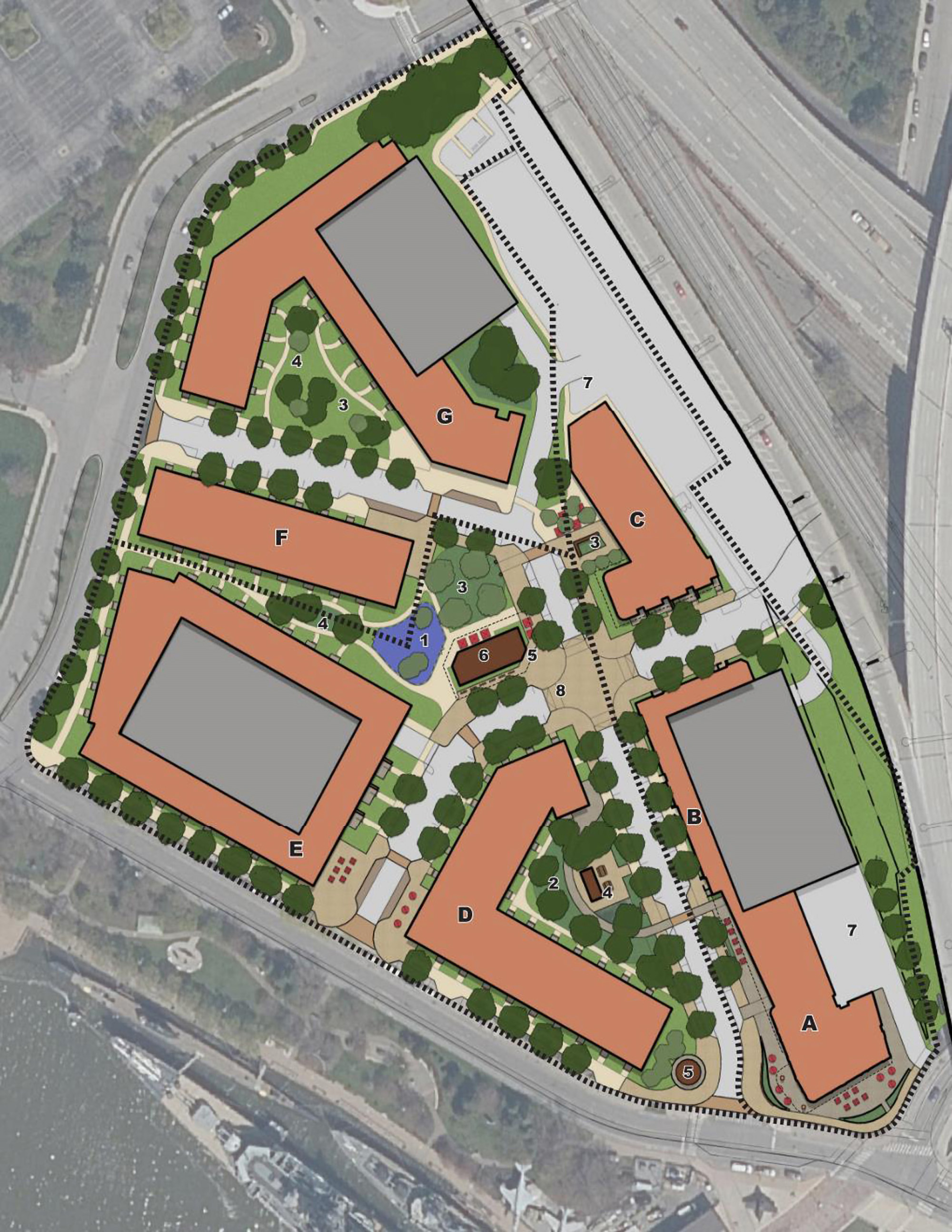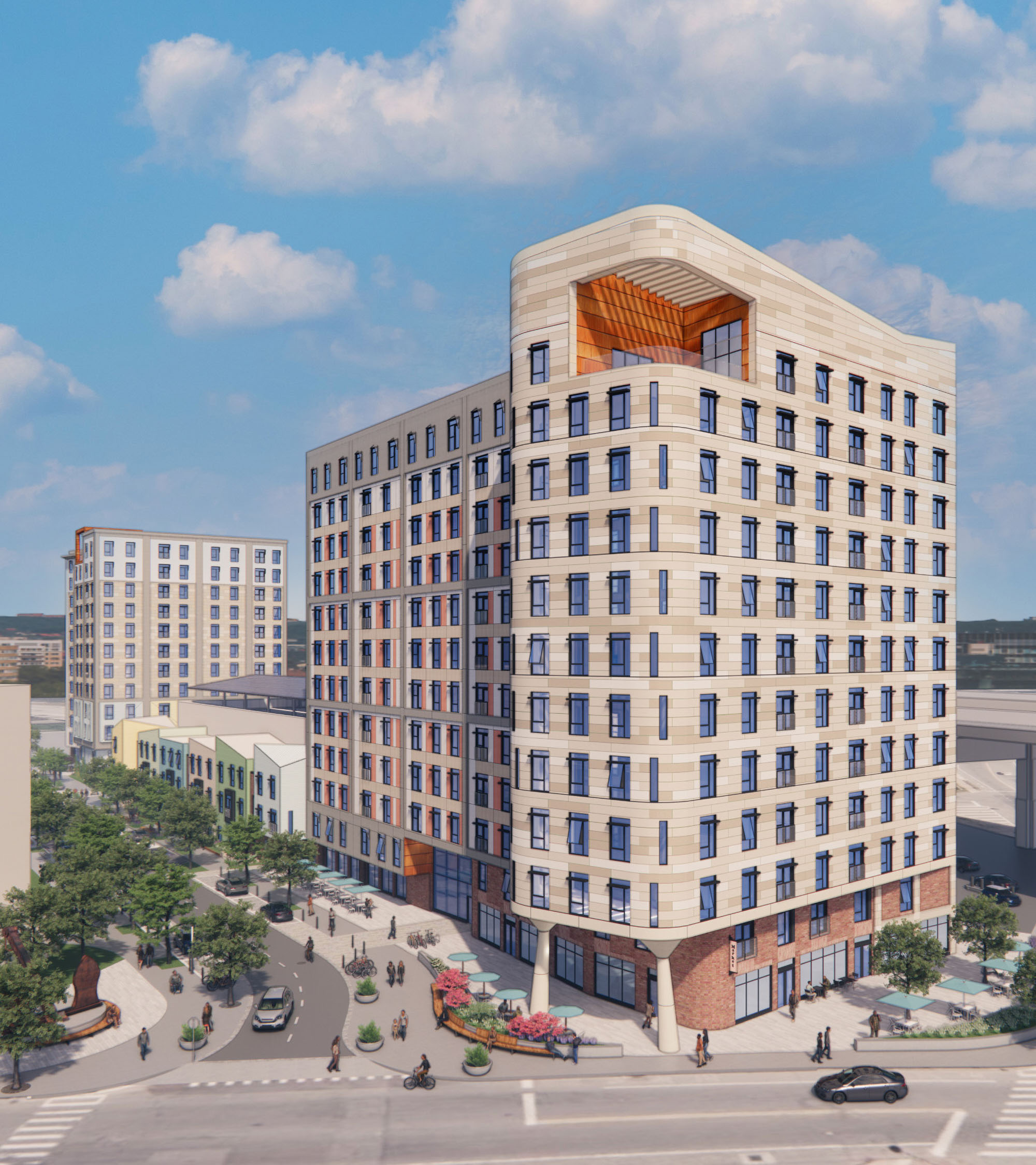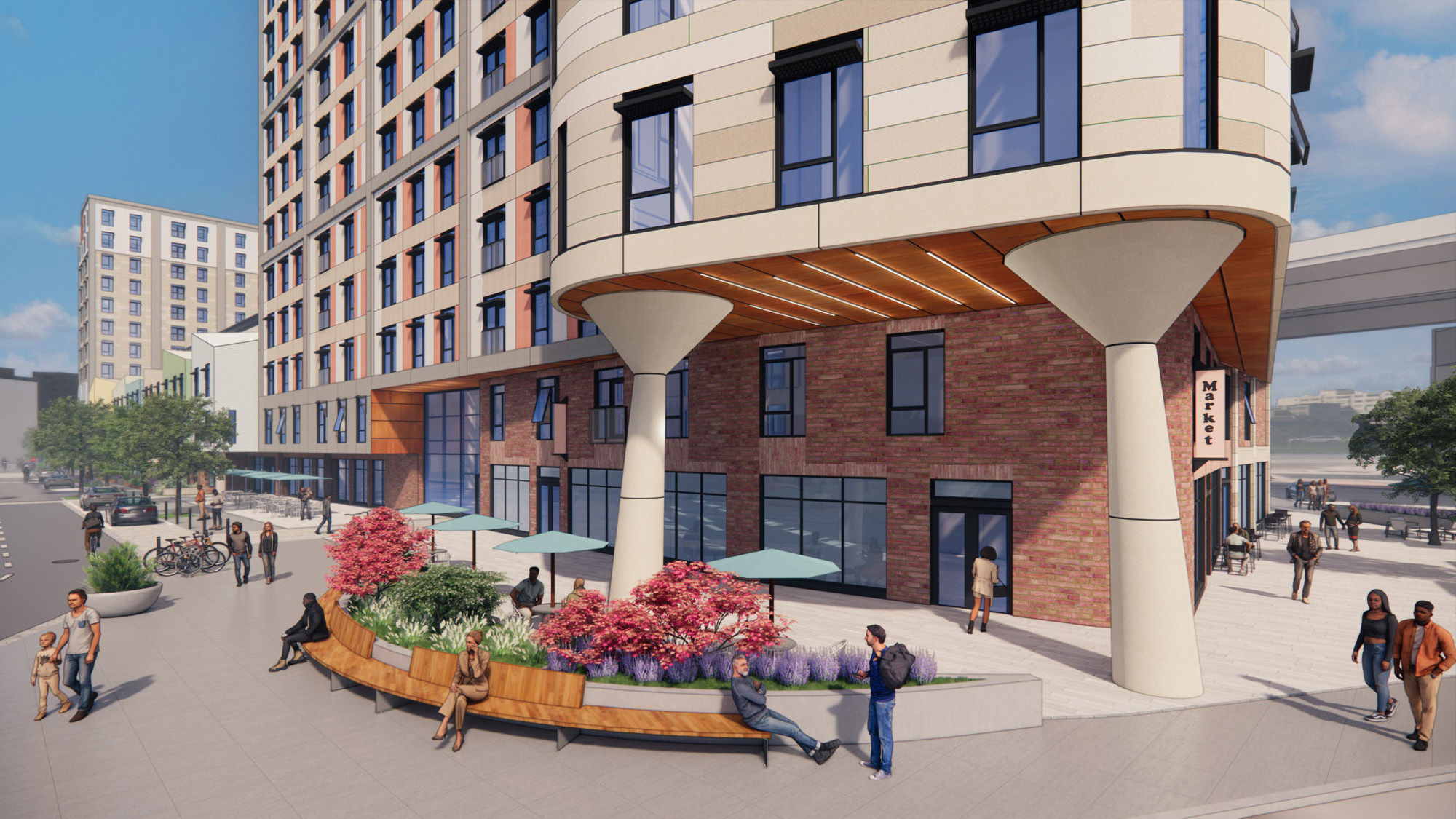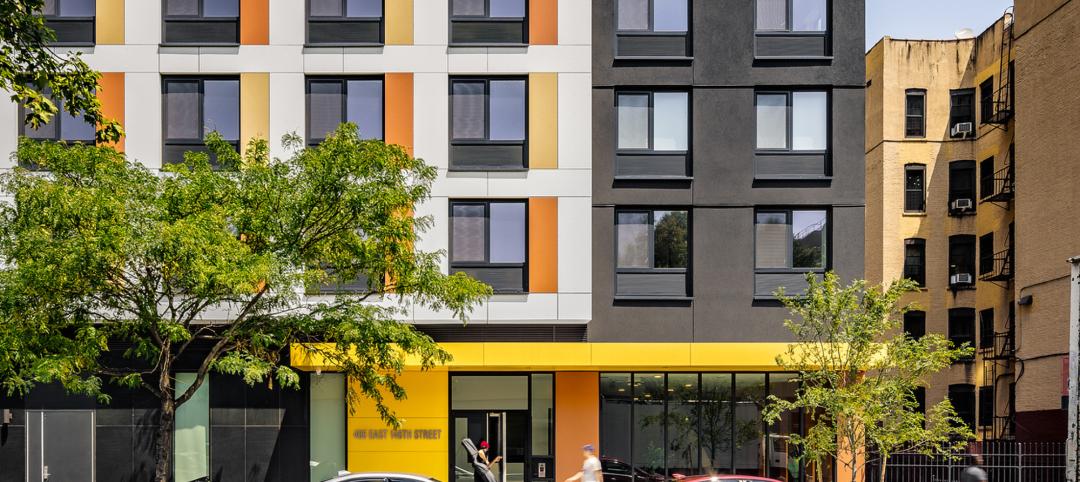Chicago-based Habitat, a leading U.S. multifamily developer and property manager, announced that its $400 million redevelopment of Marine Drive Apartments in Buffalo, N.Y., has received planned unit development (PUD) approval by the Buffalo Common Council, paving the way for the affordable housing project to become reality. The equitable transit-oriented development (ETOD), a joint venture with real estate firm Duvernay + Brooks and the Buffalo Municipal Housing Authority (BHMA), will include approximately 700 apartment units across multiple buildings, making it one of the largest affordable redevelopments in the city’s history.
Located along the city’s waterfront and a short distance from the Erie Canal Harbor Metro Rail station, the current community at 205 Marine Drive comprises 616 units across seven 12-story towers. Built more than 70 years ago, the complex has fallen into disrepair in recent years, necessitating replacement of the structures.
Affordable Housing Community: Marine Drive Apartments
Phase one of redeveloping Marine Drive Apartments includes building a mix of new towers on the surface parking lot adjacent to its current buildings. The 300,000-sf phase one complex will comprise low-, mid- and high-rise buildings, a parking garage and commercial space. The phased development approach will allow residents to move directly into the new properties from their current apartments without being displaced. Phase one is expected to break ground in late 2024.
“We have been overwhelmed by the tremendous support citywide for a new Marine Drive, which expands much-needed affordable housing in the area and keeps current residents in the place many have called home for several decades,” said Jeff Head, Vice President of Development, Habitat Affordable Group. “The site has historic significance dating back to Buffalo’s earliest days as a commercial center and offers convenience to employment, recreation and entertainment options downtown and easy access to other parts of the city via the light rail and interstate.”

An exhaustive feasibility study of the current Marine Drive towers, which were completed in 1952, determined that replacing the existing buildings with new, modern housing made the most economic sense as it would be less expensive than a complete rehab of the current structures, which are all in need of new building systems, windows, facades, and roofs.
To help inform decisions about the new Marine Drive, the property’s current residents were heavily involved in the community feedback process through a series of private planning meetings and town hall forums with the developers. Habitat recently released two videos, “Community Interaction” and “Rebuild Over Rehab,” highlighting the project scope and community involvement that helped bring the project to fruition.
“I am extremely excited, especially for the fact that the new Marine Drive buildings will be ADA accessible, which will greatly improve the quality of life for my daughter who is living with a disability,” said Barbara Aviles, who has been a Marine Drive resident since 2007. “The neighborhood is a beautiful place to live, with so much to do in the area like restaurants, roller skating, the waterfront, and it’s convenient to get to work using the bus system and train. I am grateful the developers and BMHA took feedback from residents, as it feels like we are getting a lot of what we asked for, especially in the layouts of our living room and bedrooms.”
With the PUD now approved, the Marine Drive development team is focused on getting final design approval from the city and filing financing applications with the state of New York by the end of 2023. The project is anticipated to be completed by 2029.

Habitat is working on a similar ETOD in Chicago’s historic Bronzeville neighborhood called 43 Green. The first of three mixed-use, mixed-income properties, which are adjacent to the Chicago Transit Authority’s 43rd Street Green Line L station, opened to residents this past summer, with 43 Green’s second building expected to top off by the end of the year. Upon completion, the $100 million project will bring approximately 300 new apartments to the area.
For more information on Marine Drive, visit www.engagetheteam.com/marinedrive.
About Habitat:
Founded in 1971, Habitat is a full-service residential real estate company specializing in property management, acquisitions and development. One of the largest residential property developers and managers in the United States, with over $3 billion in assets and more than 16,000 units under management across six states, the company’s portfolio spans a range of property types, from mid- and high-rise condominium, apartment and adaptive reuse developments to senior and affordable housing communities. Headquartered in Chicago, with more than 800 employees throughout the United States, Habitat is dedicated to improving the communities it serves through innovation and a commitment to excellence. For more information, visit www.habitat.com.
Related Stories
Multifamily Housing | Oct 28, 2024
A case for mid-rise: How multifamily housing can reshape our cities
Often referred to as “five-over-ones,” the mid-rise apartment type is typically comprised of five stories of apartments on top of a concrete “podium” of ground-floor retail. The main criticism of the “five-over-one” is that they are often too predictable.
Adaptive Reuse | Oct 22, 2024
Adaptive reuse project transforms 1840s-era mill building into rental housing
A recently opened multifamily property in Lawrence, Mass., is an adaptive reuse of an 1840s-era mill building. Stone Mill Lofts is one of the first all-electric mixed-income multifamily properties in Massachusetts. The all-electric building meets ambitious modern energy codes and stringent National Park Service historic preservation guidelines.
MFPRO+ News | Oct 22, 2024
Project financing tempers robust demand for multifamily housing
AEC Giants with multifamily practices report that the sector has been struggling over the past year, despite the high demand for housing, especially affordable products.
MFPRO+ Research | Oct 15, 2024
Multifamily rents drop in September 2024
The average multifamily rent fell by $3 in September to $1,750, while year-over-year growth was unchanged at 0.9 percent.
Affordable Housing | Oct 4, 2024
3 new affordable housing projects for October 2024
As affordable housing continues to grow, more projects are looking to diversify their footprint by adding mixed-use components, community areas, and more.
MFPRO+ News | Sep 24, 2024
Major Massachusetts housing law aims to build or save 65,000 multifamily and single-family homes
Massachusetts Gov. Maura Healey recently signed far-reaching legislation to boost housing production and address the high cost of housing in the Bay State. The Affordable Homes Act aims to build or save 65,000 homes through $5.1 billion in spending and 49 policy initiatives.
Adaptive Reuse | Sep 12, 2024
White paper on office-to-residential conversions released by IAPMO
IAPMO has published a new white paper titled “Adaptive Reuse: Converting Offices to Multi-Residential Family,” a comprehensive analysis of addressing housing shortages through the conversion of office spaces into residential units.
Legislation | Sep 9, 2024
Efforts to encourage more housing projects on California coast stall
A movement to encourage more housing projects along the California coast has stalled out in the California legislature. Earlier this year, lawmakers, with the backing of some housing activists, introduced a series of bills aimed at making it easier to build apartments and accessory dwelling units along California’s highly regulated coast.
Resiliency | Sep 3, 2024
Phius introduces retrofit standard for more resilient buildings
Phius recently released, REVIVE 2024, a retrofit standard for more resilient buildings. The standard focuses on resilience against grid outages by ensuring structures remain habitable for at least a week during extreme weather events.
Adaptive Reuse | Aug 29, 2024
More than 1.2 billion sf of office space have strong potential for residential conversion
More than 1.2 billion sf of U.S. office space—14.8% of the nation’s total—have strong potential for conversion to residential use, according to real estate software and services firm Yardi. Yardi’s new Conversion Feasibility Index scores office buildings on their suitability for multifamily conversion.


















